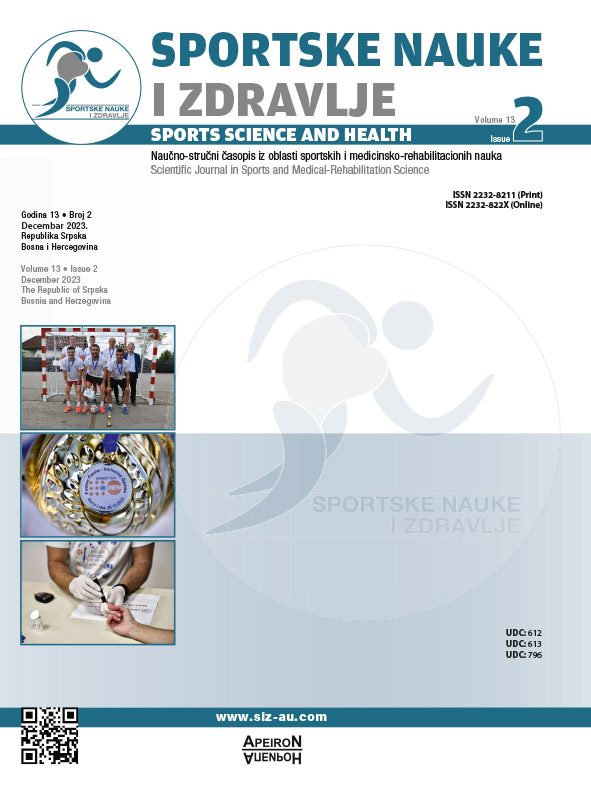Analysis of the Physical Conditions of Indonesian Beach Volleyball Players in 2022
DOI:
https://doi.org/10.7251/SSH2302233NAbstract
This research is preliminary research which aims to determine the results of the dominant physical condition components in beach volleyball athletes. This type of research is quantitative descriptive. The sampling technique used was purpose sampling. A sample of 12 volleyball players was obtained which was divided into two subsamples, namely 6 men and 6 women. The instruments used are the push up test, vertical jump, and bleep test. The data analysis technique uses descriptive analysis expressed in percentage form. with results (1) The arm muscle endurance of men’s beach volleyball athletes at Pelatnas in 2021 is in the “Adequate” category at 66.67% (4 athletes), while female athletes are in the “Adequate” category at 66.67% (4 athletes) . (2) The cardiorespiratory endurance (VO2 Max) of the 2021 National Pelatnas men’s beach volleyball athletes is in the “Adequate” category at 50.00% (3 athletes), while the female athletes are in the “Adequate” category at 50.00% (3 athlete). (3) The leg muscle strength of male beach volleyball athletes at Pelatnas in 2021 is in the “Good” category at 50.00% (3 athletes), while the female athletes are in the “Poor” category at 33.33% (2 athletes), “Fair ” by 33.33% (2 athletes), “Good” by 33.33% (2 athletes). From these dominant components, it can be concluded that Indonesian sand volleyball players have less than optimal results, so it is necessary to vary the training program by the coach.
